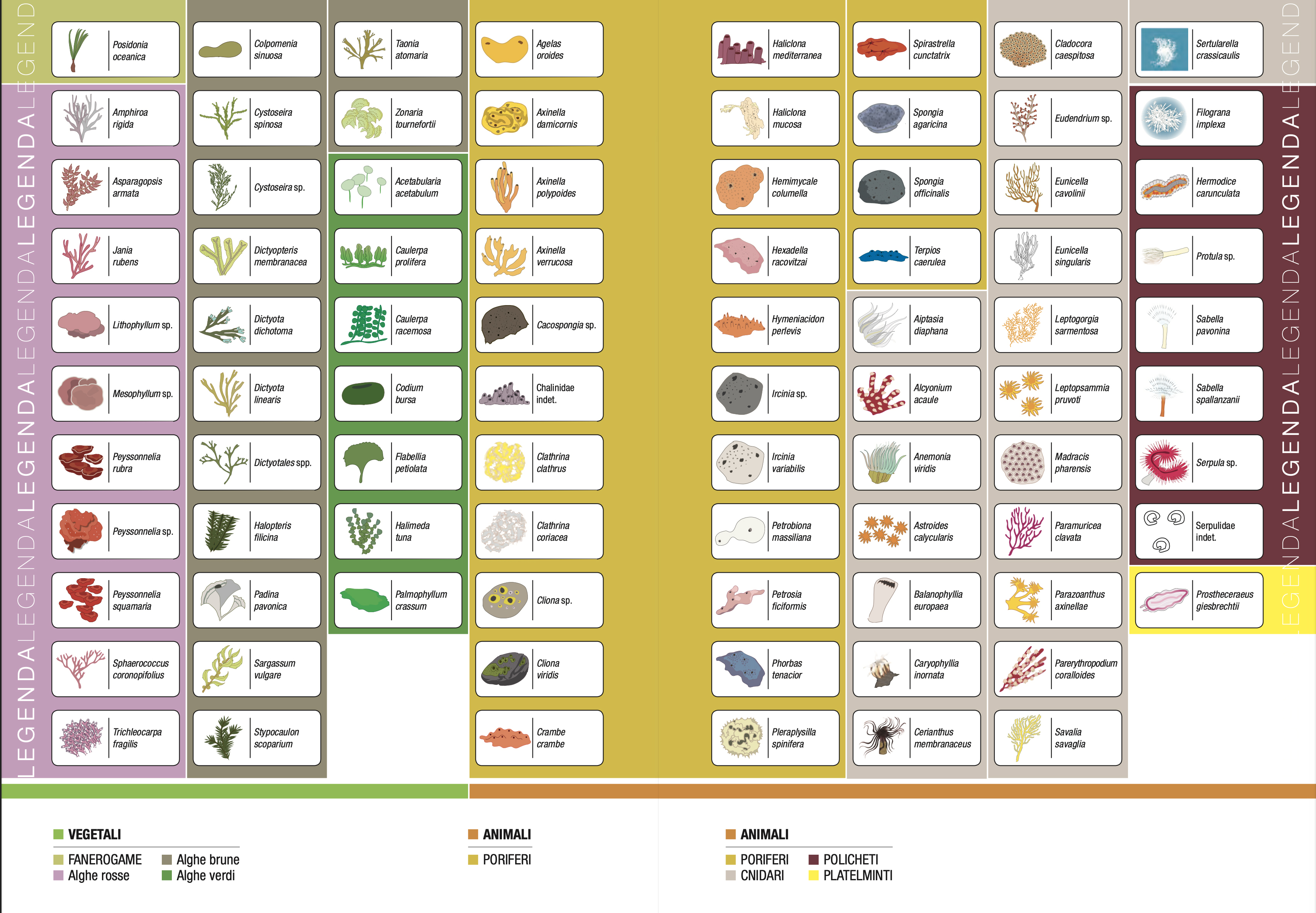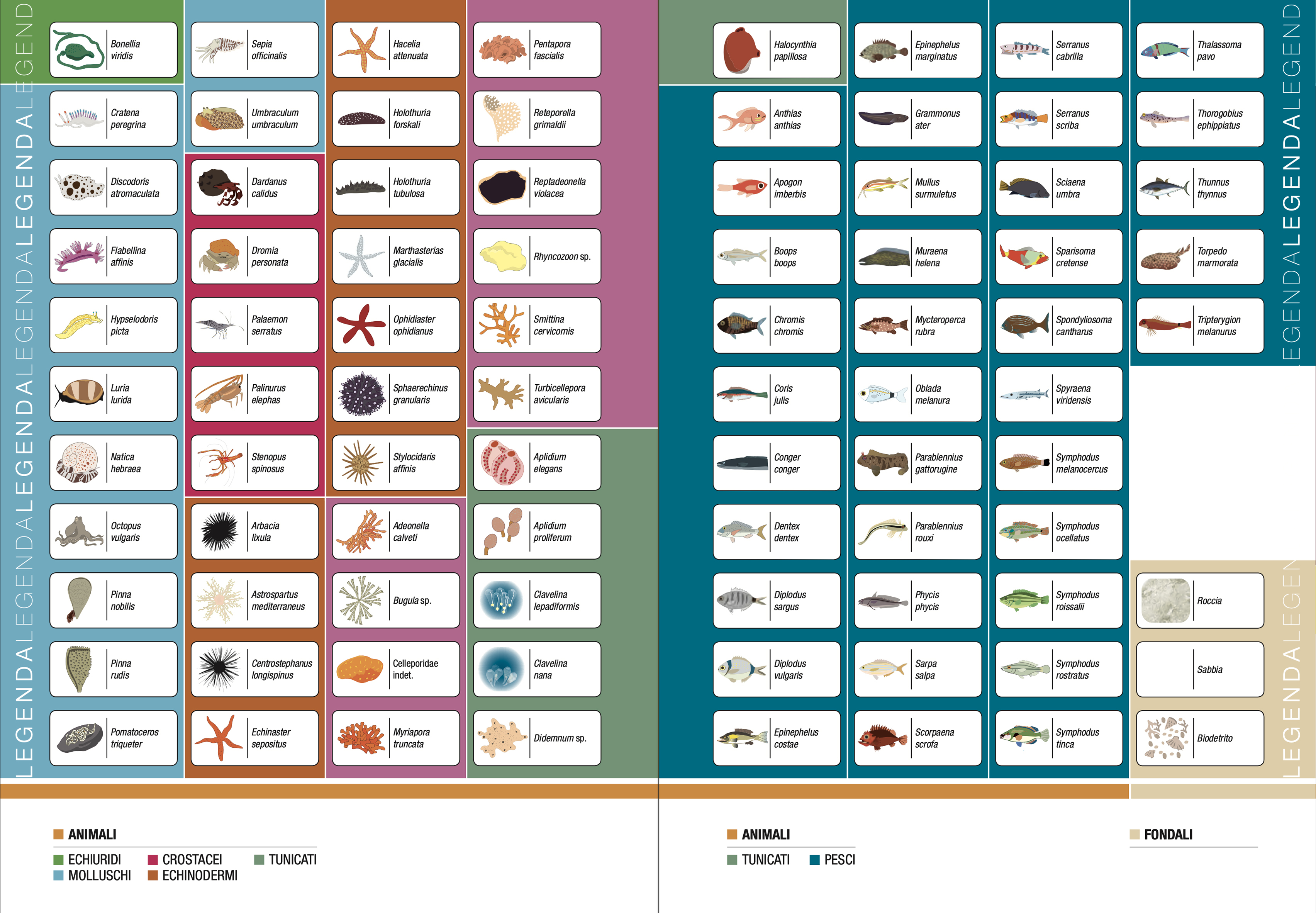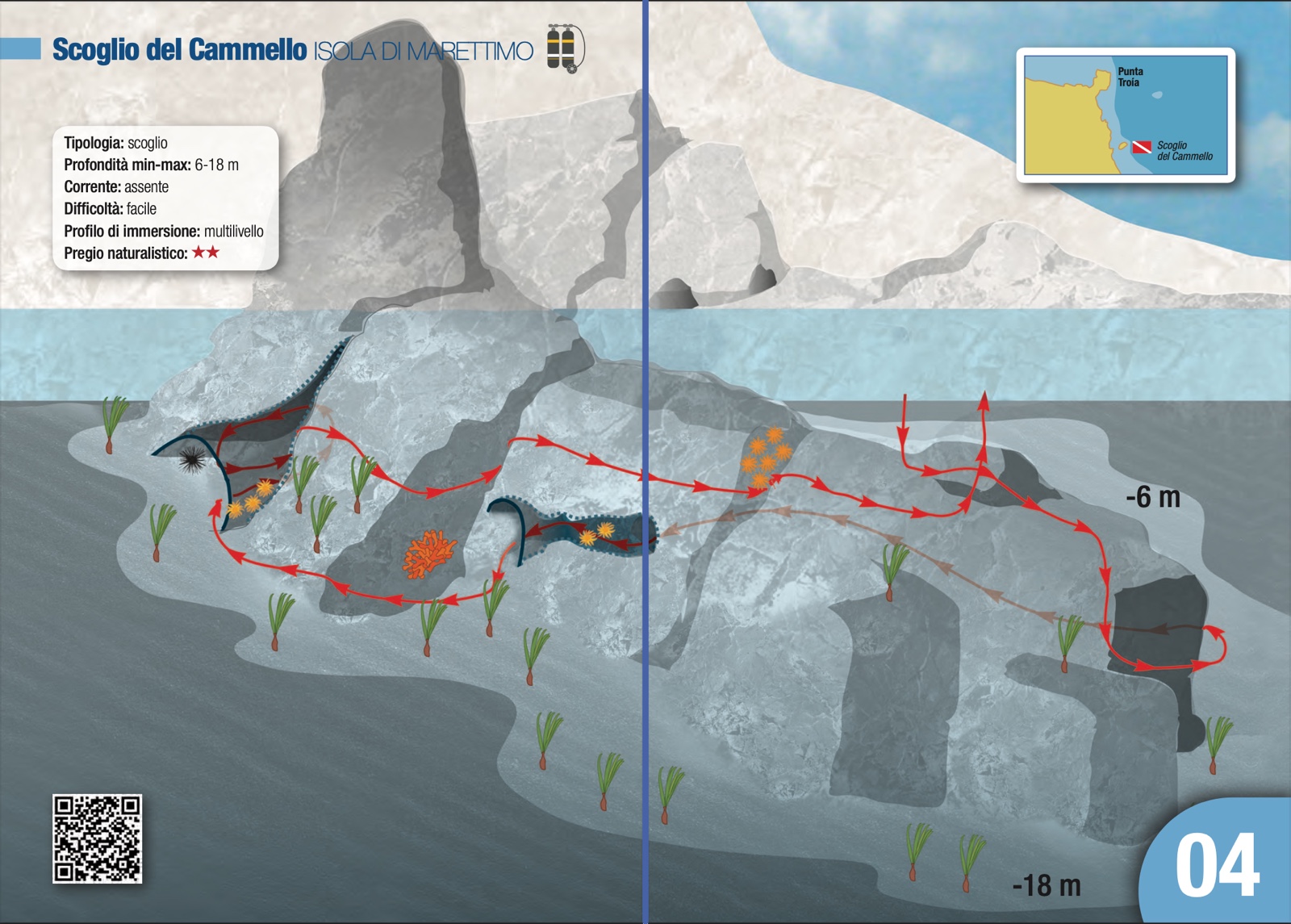Site 4 - Scoglio del Cammello
The top of the reef, located about 400 m from the coast and at a depth of 6 m, is characterised by dense algal populations (Asparagopsis armata, Halopteris filicina, Flabellia petiolata) in the flat portions, while in the small recesses one can see the bivalve Pinna rudis, the reed sea urchin (Sphaerechinus granularis) and the red star (Echinaster sepositus). Under the vaults, one notices the orange sponge Spirastrella cunctatrix and the bryozoan known as 'false coral' (Myriapora trunacata). At about 9 m, there are extensive patches of Posidonia oceanica, the madrepore Balanophyllia europaea, tufts of the seaweed Cystoseira sp. in correspondence with which one can encounter the sciarrano (Serranus scriba), the rock mullet (Mullus surmuletus), the peeper (Oblada melanura) and the parrotfish (Sparisoma cretense). Not unusual is the encounter with the moray (Muraena helena) whose head can be seen protruding between the rocks. Along the sub-vertical wall facing north, which descends to a depth of 15 m, there is a thick covering of the algae Flabellia petiolata, which is enriched in depth and near the cracks by patches of the orange madrepores Astroides calycularis and specimens of the sponge Chondrosia reniformis, the red ascidian Halocynthia papillosa, the orange star Hacelia attenuata and the nudibranch Cratena peregrina. A tunnel makes it possible to pass from the north to the south side of the Camel Rock: at the beginning, the yellow madrepora Leptopsammia pruvoti, the sponges Petrosia ficiformis, Agelas oroides and various bryozoans (Adeonella calveti, Reteporella grimaldii, Celleporidae spp.) are found on the vault. At the exit, on the other hand, there are scattered colonies of the madreporaria Cladocora caespitosa, while shoals of damselfish (Chromis chromis) and specimens of king mullet (Apogon imberbis) swim nearby. Proceeding ashore, one notices the entrance to a cave with a sandy bottom at about 17 m: on the vault are yellow corallites of L. pruvoti, red branching colonies of M. truncata and numerous sponges (A. oroides, S. cunctatrix, Hemimycale columella, Clathrina clathrus, Cliona sp.). In the inner part of the cave, the limestone tubes of the protulae (Protula sp.), the black hedgehog with long spines Centrostephanus longispinus and the vermocane Hermodice carunculata can be seen. On the collapse boulders at the base of the cave, one can encounter the lobster (Palinurus elephas), the hermit crab Dardanus calidus, as well as the echinoderms Holothuria tubulosa and H. forskali. If you pay closer attention, you can catch a glimpse of the long, T-shaped protuberance (proboscis) of the echiuridae Bonellia viridis lying on the bottom among the foliage of the brown seaweed Zonaria tournefortii.
Legenda:


-
Information
-
Contacts
